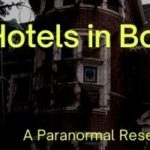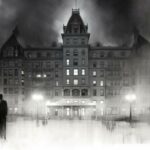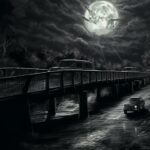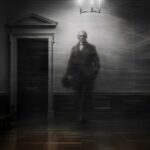Table of Contents
Boston, steeped in history and shrouded in the mists of time, harbors a chilling array of haunted places that beckon the brave and the curious. From the narrow, cobblestone streets to the ancient graveyards, spectral whispers and eerie occurrences are almost tangible in the night air. This guide invites you to explore the city’s most spine-tingling locations, where the past lingers and the shadows play.
If you are doing any kind of paranormal investigation here, you might want to take a look at our ghost hunting equipment list. Locations like this get a reputation because they are high activity and you don’t need much to see for yourself.
Omni Parker House
The Omni Parker House in Boston, Massachusetts, stands as a beacon of high society and spectral whispers. Since its establishment in 1855, the luxurious hotel has etched its name into the annals of history, not only for its opulent charm but also for its ghostly residents. Its founder, Harvey Parker, poured his heart and soul into the establishment, ensuring every guest experienced unsurpassed hospitality. However, it seems that Parker’s dedication transcended mortality, as many believe his spirit still lingers, ensuring the hotel maintains its high standards from beyond the grave.
As the sun dips below the horizon and the cloak of night envelops the city, the Omni Parker House transforms into a playground for phantoms. Guests and staff alike have reported eerie encounters with the otherworldly. The third floor, in particular, serves as the hotspot for supernatural activity, where the ghost of Harvey Parker himself allegedly makes his presence known. It’s as if the hotel walls, steeped in history, have ears, echoing the whispers of the past.
The hotel’s spectral ensemble includes more than its meticulous founder. Charles Dickens, who once stayed at the Parker House, is rumored to haunt the premises, perhaps reciting lines from “A Christmas Carol,” a novel partly written within these very walls. The mirror he used during his stay now reflects more than the living, as guests have claimed to catch glimpses of Dickens’ ghostly figure.
The Parker House rolls out the red carpet for all its guests, alive or dead. The haunting allure of the hotel is not just a feather in its cap; it’s a skeleton in its closet. While most hotels boast of their thread count or room service, the Omni Parker House’s claim to fame is its ability to have guests check in for an eternity.
In the heart of the historic district, the hotel’s grandeur stands the test of time. It wears its haunted reputation as a badge of honor, with the ghost of Harvey Parker as its sentinel, ensuring that the Omni Parker House remains the talk of the town and the haunt of Boston.
I stayed at the Omni Parker House in Boston, and let me tell you, it’s creepy at night—heard some guests say they saw Harvey Parker’s ghost wandering the third floor, still checking on his hotel!
The Liberty Hotel
The Liberty Hotel in Boston, Massachusetts, stands as a testament to the city’s dark and eerie past. Its walls, which once echoed with the despair of the incarcerated, now whisper tales of ghostly encounters. The transformation from the infamous Charles Street Jail to a luxurious hotel has left an indelible mark on the fabric of Boston’s supernatural folklore.
The storied history of The Liberty Hotel began in the mid-19th century when Mayor Martin Brimmer called for a new jail to alleviate the overcrowding at the Leverett Street Jail. In 1848, the cornerstone of the Charles Street Jail was laid, and famed architect Gridley James Fox Bryant brought it to life in 1851. Bryant’s architectural prowess was the talk of the town, and the jail quickly became a Boston landmark. And yet, despite his contributions, Bryant’s final days were spent in obscurity, his once-shining star dimmed by the sands of time.
As the years rolled by, the Charles Street Jail’s walls bore witness to the incarceration of some of the most notorious criminals, but it was the spirits of these troubled souls that refused to be confined by bars and locks. They lingered, long after their sentences had expired, and the jail’s transformation into The Liberty Hotel did little to quell their restlessness.
Today, The Liberty Hotel is a beacon of modern luxury, but guests and staff alike have reported eerie occurrences that hint at its spectral residents. The ghost of an unnamed prisoner is said to roam the property, his ethereal footsteps echoing through the corridors. Visitors often feel an unexplainable chill, as though the cold hand of the past is reaching out to them.
Another tale that sends shivers down the spine is that of the jail’s former warden. His apparition has been sighted keeping a watchful eye over the premises, ensuring that order reigns, even in the afterlife. It’s as if the line between the living and the dead blurs within the hotel’s confines, with spirits standing shoulder to shoulder with guests.
The Liberty Hotel, with its lavish accommodations and rich history, has become a bucket list destination for thrill-seekers and history buffs alike. The building’s transformation from a place of punishment to one of pleasure has not erased the echoes of its past. Instead, it serves as a bridge between the tangible and the spectral, a place where the veil is thin and the spirits of yesteryear walk hand in hand with the present.
I was chilling in my room at the Liberty Hotel when I heard this weird clanking sound, like old chains dragging, and then I saw a shadowy figure just drift through the wall, gave me the creeps big time.
Uss Constitution
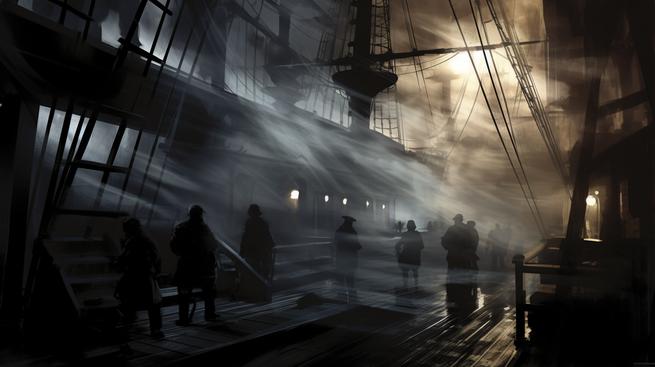
The USS Constitution, an iconic vessel docked in Boston, Massachusetts, boasts a storied past that continues to captivate visitors with tales of eerie encounters and ghostly legends. Known affectionately as “Old Ironsides,” a synecdoche for her resilient wooden hull, this maritime marvel has sailed through history, leaving a wake of spectral stories in her trail.
According to local lore, the spirits of former sailors still man their eternal watch aboard the ship. Witnesses have reported unexplained sounds, such as footsteps and voices, echoing through the deserted decks. Some even claim to have seen apparitions in period uniforms, suggesting that these spectral sailors remain duty-bound to the vessel they once served.
The most famous ghostly resident is said to be the spirit of Thomas Chew, a Marine sergeant who met a tragic end aboard the ship in the early 1800s. His presence is often felt in the gun deck, where he allegedly succumbed to a freak accident during a gun drill. Visitors recount an inexplicable chill in the air and the sensation of being watched, as if Sergeant Chew still lingers to ensure the safety of his beloved ship.
Another prominent phantom is the ethereal figure of a young sailor who purportedly fell from the rigging to his untimely death. His ghost is rumored to haunt the forecastle, a place where he once toiled and now appears to seek solace in the afterlife.
The USS Constitution’s haunted history adds a layer of mystique to this already remarkable survivor of naval warfare. As the oldest commissioned warship afloat, Old Ironsides has withstood the test of time and battle, her very name an idiom for strength and durability.
Today, the ship stands as a proud testament to America’s naval heritage, her ghost stories weaving a rich tapestry of maritime tradition that continues to draw the curious and the brave. Whether these tales are the stuff of legend or have a basis in spectral truth, the USS Constitution remains a vessel alive with the echoes of her storied past, her haunted history an indelible part of Boston’s cultural tapestry.
I heard that the ghost of Sergeant Thomas Chew still hangs around the USS Constitution’s gun deck, where he died way back when. Some folks say they’ve seen him or heard his boots clomping around the old ship at night.
Boston Common
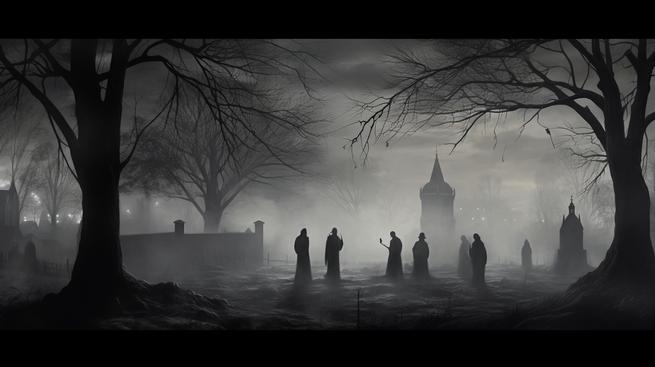
Boston Common, often referred to as “America’s Oldest Park,” holds more than the distinction of age and beauty; it carries a haunted legacy woven into its very soil. The sprawling green, located at 139 Tremont St, Boston, MA 02111, is not just a haven for sunbathers and dog walkers; it is also the heart of the city’s spectral past.
For over a century, the Common was the stage for public executions, where criminals, accused witches, and pirates met their grisly ends. These events turned the park into a magnet for dark tales and ghostly encounters, as the land doubled as a mass grave for the condemned, the impoverished, and the sick. The park has seen the full spectrum of human experience, from the macabre to the majestic, hosting throngs eager to catch a glimpse of figures like George Washington and Martin Luther King Jr., as well as entertainers such as Whitney Houston.
The spirits of those who suffered and perished in Boston Common are said to linger still. The park’s history of public hangings and its use as a makeshift cemetery contribute to its reputation as Boston’s most haunted stretch of green. Nighttime visitors and ghost tour enthusiasts often report eerie sensations and unexplained occurrences, hinting that the souls of the past are not at rest.
Adding to its haunted heritage, British troops made their camp here during the Revolutionary War, perhaps leaving behind echoes of their presence. Boston Common has become a tapestry of the city’s history, with each thread representing a different era, each knot a different story.
Today, Boston Common’s ghostly reputation is a testament to the city’s rich and tumultuous history—a history that continues to captivate and chill those who stroll through its paths. The park serves as a living reminder that Boston’s past is always just beneath the surface, waiting to be unearthed.
I heard that Boston Common is more than just some old park; they say the ghosts of folks who were hanged there still wander around, and late at night, you might just feel a chill or hear whispers from the past. It’s like history never really died there, just keeps on haunting.
The Boston Athenaeum
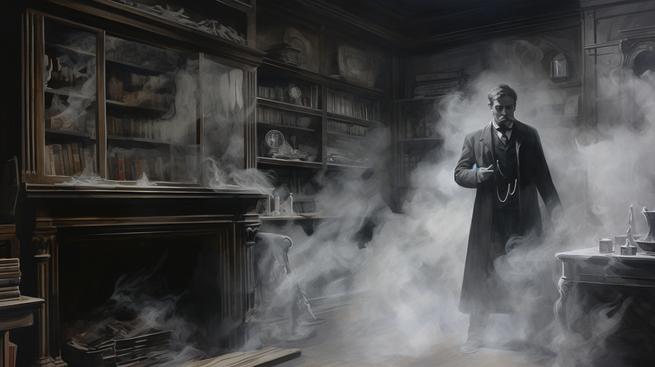
The Boston Athenaeum, a beacon of culture and knowledge in Boston, MA, stands not only as a testament to the intellectual pursuits of its members but also as a dwelling with a spine-tingling past that adds a spectral layer to its rich history. The hallowed halls of this grand institution whisper with tales of the otherworldly, where books and ghosts line the shelves in equal measure.
Nestled in the heart of Beacon Hill, the Athenaeum has been a home away from home for scholars and bibliophiles since its inception in 1807. Its storied walls, however, are said to house more than just the living connoisseurs of literature. Among the most famous phantoms believed to roam its five floors is the ghost of a scholarly gentleman, a remnant from the 19th century, who appears to be ever searching for a book he can never find.
The Athenaeum’s patrons often speak of the rustling of pages in an empty room or the faint scent of pipe tobacco that drifts through the air without a source. Some have even reported seeing books glide back into place on the shelves, as if a spectral librarian were ensuring order in the afterlife.
One particular story that sends shivers down the spines of visitors is that of the Athenaeum’s portrait of Dr. George Parkman, a wealthy Bostonian whose murder in 1849 remains a macabre chapter in the city’s history. It’s said that Dr. Parkman’s eyes follow visitors as they move across the room, and some claim his spirit still seeks justice from beyond the grave.
Though these ghostly encounters could easily be dismissed as the product of overactive imaginations, they serve to enhance the Athenaeum’s atmosphere, making it a place where history feels very much alive—or, perhaps more accurately, eerily undead. Whether these spirits are simply echoes of the past or residents from the other side, the Boston Athenaeum’s haunted history continues to enchant and spook its visitors in equal measure.
I swear I heard the flip of old book pages when no one was around, and a whiff of pipe smoke hit me, even though nobody’s allowed to smoke in there. It’s like that old-timey ghost dude is still hunting for his lost book or something.
The Granary Burying Ground
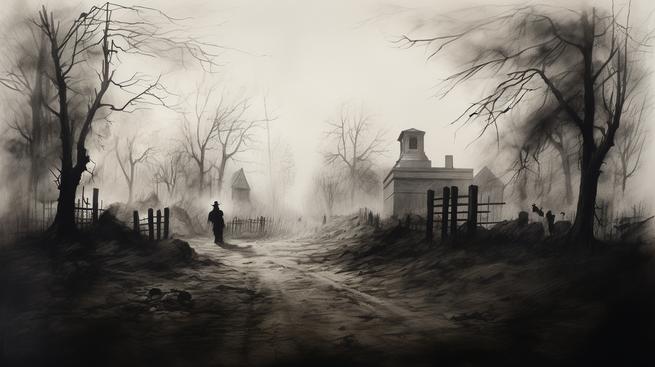
In the heart of Boston, the Granary Burying Ground stands as a testament to the city’s macabre past. Established in 1660, it is the city’s third-oldest cemetery and has become the final resting place for many of Boston’s most illustrious figures. However, it’s not just the prominent headstones that catch the eye; whispers of the supernatural also echo through its storied pathways.
The spirits of the Granary Burying Ground are as much a part of Boston’s history as the cobblestone streets themselves. Visitors often report an unsettling feeling washing over them as they walk among the graves, a sensation that some believe is the lingering presence of the souls interred within this hallowed ground. The cemetery is a hive of ghostly activity, with tales of apparitions and eerie occurrences that have withstood the test of time.
Among the notable spirits said to roam the grounds is the ghost of Paul Revere, whose midnight ride is etched into the annals of American history. Though his body lies in repose, some say his spirit is still making the rounds, as if one foot is still in the stirrup, ready to alert the living to the unseen world around them.
Another famed specter is that of Samuel Adams, a man whose name is synonymous with the American Revolution. The story goes that his ghost doesn’t rest easy, perhaps still mulling over strategies for liberty or keeping a watchful eye on the nation he helped birth.
The Granary Burying Ground is also home to the five victims of the Boston Massacre, whose untimely demise fueled the flames of rebellion. It’s said that their spirits come together, a brotherhood of phantoms, perhaps reliving their final moments or seeking solace in their shared fate.
It’s not just the spirits of the well-known that haunt these grounds; countless unnamed souls also contribute to the eerie atmosphere. The cemetery, a stone’s throw from the living city, serves as a chilling reminder that the past is never truly gone. It’s as if the spirits of the Granary are keeping one foot in the grave and one hand on the shoulder of the present, making sure their stories are never forgotten.
To visit the Granary Burying Ground is to walk through a chapter of American history that refuses to be closed. It’s a place where the veil between the living and the dead seems perpetually thin, and where every whisper of the wind might carry the secrets of the past. With every step on its sacred soil, one can’t help but feel they are not alone, for the ghosts of the Granary are always just a breath away.
I swear, as I wandered through the Granary Burying Ground, I felt a chill and saw a shadowy figure on horseback – folks say it’s Paul Revere, still riding after all these years. It spooked me something fierce, like he was still rushing to warn us that the British are coming!
The Cutler Majestic Theatre
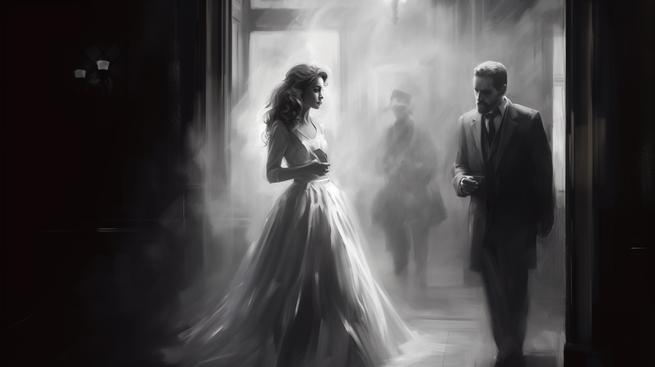
The Cutler Majestic Theatre in Boston, Massachusetts, is a beacon of Victorian splendor, a jewel in the city’s cultural crown. Yet, beneath its opulent surface lies a tapestry of spectral tales that continue to captivate and chill those who dare to delve into its past. The theater, built in 1903, has weathered the storms of time, from the pinnacle of live performance to the brink of demolition, only to rise again, like a phoenix from the ashes.
As the curtains rise and fall, the Cutler Majestic Theatre plays host to more than just the living. Whispers among the staff and patrons tell of ghostly figures who have taken up permanent residence in the theater. These phantoms, as much a part of the theater as the gilded proscenium, refuse to relinquish their seats, even after the final bow.
One of the most storied spirits is that of a little girl with a penchant for laughter, her giggles echoing in the corridors when the house is hushed. She’s often accompanied by the apparition of an elderly couple, believed to be her doting grandparents, who watch over the theater’s revelries with an unseen, protective gaze.
In the balcony, where the elite once observed the grandeur below, shadows dance in the absence of light. Here, a lone usher from bygone days continues his vigilant watch, his presence felt but rarely seen, an eternal caretaker of the arts.
The theater’s history is a patchwork of glory and decline, a reflection of the ebb and flow of Boston’s own story. Today, the Cutler Majestic Theatre stands not only as a monument to performance art but also as a sanctuary for its ghostly inhabitants. As the adage goes, “the show must go on,” and it seems that for these eternal spectators, it forever will.
However, the exact identities of these spectral patrons remain a tantalizing mystery, shrouded in the mists of time. Their stories are interwoven with the very fabric of the theater, each thread a silent testament to the indelible mark they’ve left upon the Cutler Majestic’s storied stage.
I was chilling in the Cutler Majestic Theatre after a show when I heard this kid laughing out of nowhere; turns out, it’s just the resident ghost girl who likes to hang around. And man, they say she’s got an old-timey ghost pal who pops up with her sometimes, too.
Fort Warren On Georges Island
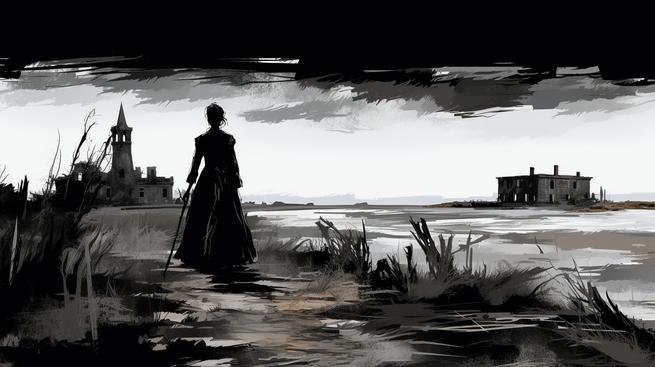
George’s Island, a jewel among the Boston Harbor Islands, boasts more than just scenic vistas; it harbors a ghostly legend that chills the bones of many visitors. The island’s most notorious spectral resident, known as The Lady in Black, is said to be the restless spirit of Mrs. Melanie Lanier, a devoted Confederate soldier’s wife whose tragic tale of love and loss has etched itself into local folklore.
The story goes that upon receiving word that her husband was languishing in the bowels of Fort Warren, a prison for Confederate soldiers, Mrs. Lanier’s heart ached with a fierce resolve. Clad in men’s attire, her hair shorn to aid her disguise, she embarked on a perilous journey from the heart of Georgia to the shores of Hull, Massachusetts. From there, she set her sights on George’s Island, a stone’s throw away, with determination as her oar and a pickaxe and concealed pistol as her silent accomplices.
On a night cloaked in tempestuous weather, Mrs. Lanier’s moment of reckoning arrived. Guided by the familiar strains of a southern tune hummed by her imprisoned husband, she navigated the choppy waters and crept ashore. With the aid of Confederate sympathizers, she tiptoed through the fort’s shadows to her beloved’s cell.
But fate is a fickle friend, and their plan went awry when a Union officer stumbled upon them. In the ensuing scuffle, Mrs. Lanier’s pistol, brandished with the hope of securing freedom, became the harbinger of doom. The weapon discharged unexpectedly in the tussle, its bullet claiming the life of her husband—the very soul she sought to rescue.
As punishment for her daring and deadly intrusion, Mrs. Lanier met her end at Fort Warren, her life snuffed out like a candle in the wind. Yet, it is said that death could not tether her spirit. Cloaked in the ebony garb of mourning, she roams the ramparts and passageways of the fort, a phantom out of time, her sorrow as palpable as the sea breeze.
Visitors to George’s Island often whisper of glimpses of the Lady in Black, a ghostly figure that sends shivers down the spine and makes the heart skip a beat. Her legend lives on, a tale as old as time, eternally woven into the fabric of the island’s history. Whether a flicker in the corner of the eye or a chill in the air, the presence of Mrs. Lanier’s specter keeps the story alive, a reminder that some loves never die, and some ghosts never rest.
I heard about this ghost, the Lady in Black, who haunts Fort Warren on George’s Island. They say she was a soldier’s wife who died trying to break him out of prison, and now her spirit can’t rest.
The Massachusetts State House
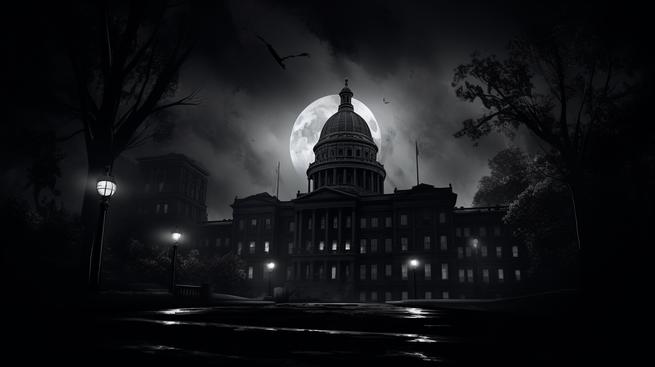
The Massachusetts State House in Boston stands as a beacon of American history, its golden dome a shining symbol of the Commonwealth. Within its hallowed halls and storied corridors, whispers of the past stir the air, carrying tales of spectral sightings and otherworldly encounters.
Built on land once owned by Massachusetts’s first elected governor, John Hancock, the State House has seen the wheels of government turn since its completion in 1798. Its iconic structure, designed by renowned architect Charles Bulfinch, has become the crown jewel of Beacon Hill. But beneath the gilded surface, the State House harbors a haunted legacy that continues to intrigue both locals and visitors alike.
In the dead of night, security guards and late-working staffers tell of unexplained phenomena that set the spine a-tingling. Echoes of invisible footsteps resound through the corridors, as if the ghosts of lawmakers past still pace the floors, debating the fates of bygone constituents. The grand staircase, which has seen the soles of countless politicians and dignitaries, also seems to bear the weight of invisible presences, climbing toward the legislative chambers in ceaseless procession.
The most chilling tales involve the ghost of a man believed to be a former custodian, who passed away within the building’s walls. Sightings of his apparition, often glimpsed wielding an old-fashioned mop and pail, suggest that he continues his custodial duties from beyond the grave. Witnesses report encountering his spirit burning the midnight oil, diligently polishing the floors long after the living have departed.
Another specter, that of a woman in antique clothing, has been seen gazing out of the windows, her eyes fixed upon the Commonwealth’s cradle. Some speculate she is searching for a lost loved one, perhaps a soldier who never returned from war, her soul anchored to the place where news of his fate might have first arrived.
The Massachusetts State House serves not only as the seat of power but also as a repository for the echoes of history. Its haunted reputation adds a layer of mystique to the already imposing edifice. Visitors flock to the site, hoping to catch a glimpse of these eternal residents, while the more skeptical come to bask in the grandeur of the building’s architectural splendor.
Regardless of one’s beliefs in the paranormal, the Massachusetts State House stands as a living monument to the past, its ghosts serving as a reminder that history, with all its triumphs and tragedies, leaves an indelible mark on the present.
I heard that when the State House gets real quiet, you can catch the sound of phantom footsteps, like old-timey politicians are still stomping around making big decisions. Some folks even say they’ve seen ghostly figures drifting through the halls, which gives me the creeps just thinking about it.
The Charlesgate Hotel
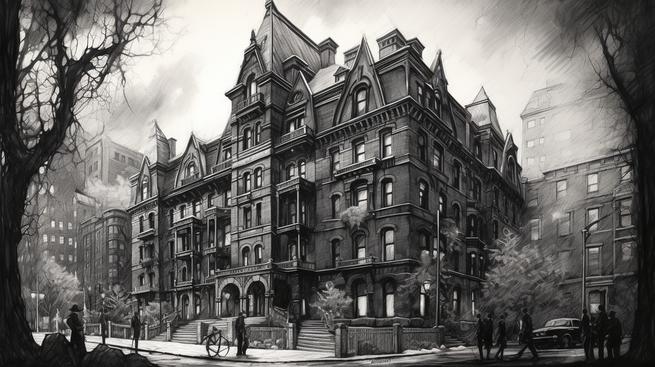
Nestled in the heart of Boston’s Back Bay, the Charlesgate Hotel stands as a beacon of the city’s haunted past. Built in 1901 by the famed architect J. Pickering Putnam, the Charlesgate’s ornate edifice has long been a cornerstone of the neighborhood’s architectural charm. Yet, beneath its decorative facade, the hotel harbors a history teeming with eerie tales and ghostly encounters.
The Charlesgate Hotel quickly became the talk of the town, not just for its grandeur, but for the whispers of otherworldly occurrences echoing through its halls. Guests and employees alike have reported spine-tingling experiences, from the sound of phantom footsteps pacing the corridors to the sudden chill that descends without warning, as if a spectral presence had breezed through the room.
One of the most chilling stories from the Charlesgate involves a game of cards that took a deadly turn. Legend has it that a group of men were engaged in a heated poker match when an argument erupted, leading to a fatal shooting. To this day, guests claim to hear the ghostly echoes of that fateful argument, the shuffling of cards, and the clap of a gunshot that ended a life and began a haunting.
Another tale that sends shivers down the spine is that of a young woman who took her own life after being spurned by a lover. Her forlorn spirit is said to wander the halls, eternally seeking solace for her broken heart. Her mournful presence is a sad reminder of the love and loss that seep into the very walls of the Charlesgate.
The hotel’s reputation as a haunted hotspot has not waned over the years. In fact, it’s become a magnet for those with a penchant for the paranormal, drawing in thrill-seekers and ghost hunters eager to catch a glimpse of the supernatural.
While the Charlesgate has transitioned from a luxurious hotel to private residences, the tales of its haunted heritage continue to be a vibrant part of Boston’s ghostly narrative. The spirits of the Charlesgate, it seems, refuse to check out, ensuring that the hotel’s legacy remains as alive as ever in the annals of the supernatural.
So there’s this old hotel in Boston, right? Well, one night, these guys were playing poker there and got into a huge fight, and now people say you can still hear their angry ghosts arguing and feel a creepy cold spot where it all went down.
The Old South Meeting House
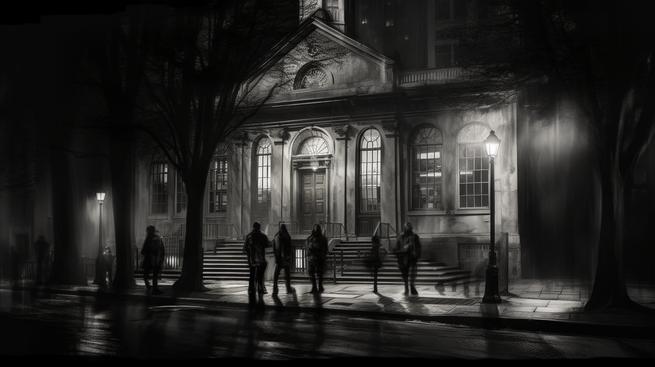
The Old South Meeting House in Boston, Massachusetts stands as a storied monument, steeped in the annals of American history. Known primarily as the organizing point for the Boston Tea Party in 1773, this hallowed hall whispers tales of the past that some believe include ghostly encounters.
Legends tell of spectral figures that roam the aisles and the pulpit, perhaps the spirits of patriots who once stirred the fires of revolution within its walls. Visitors have reported eerie sensations, sudden chills, and the feeling of being watched by unseen eyes. The echoes of the past come alive in the dead of night when the living have departed, and the spirits are said to reclaim their old haunt.
The Meeting House, a witness to the revolutionary spirit, now serves as a beacon to the curious and those with a thirst for the supernatural. The very timbers and bricks seem to hold the essence of the historic events that transpired within, as if the walls themselves are imbued with the remnants of spirited debate and clandestine plans.
As one of Boston’s most venerable landmarks, the Old South Meeting House stands not just as a testament to the city’s history but also as a chapter in the ghostly lore that adds an air of mystery to its already storied existence. Those who dare to explore its history may find themselves walking in the footsteps of phantoms, the whispers of the past forever entwined with the fabric of this revolutionary site.
I was walking past the Old South Meeting House one chilly evening when I felt a sudden cold spot and saw a shadowy figure darting between the pews—it gave me the creeps! They say it’s the ghost of a patriot, still hanging around from the days of the Boston Tea Party.
The Boston University Bridge
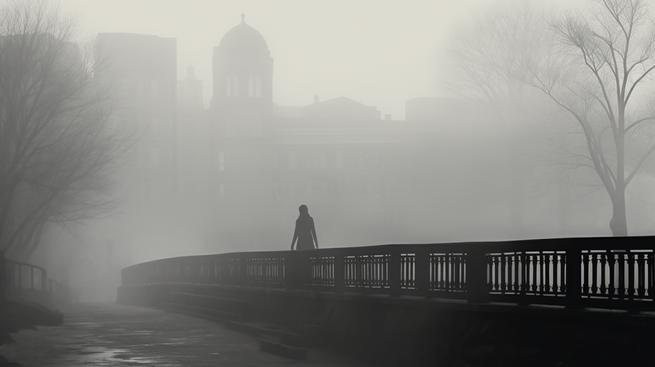
The Boston University Bridge, a storied span over the Charles River, serves as a tangible link between past and present, carrying countless souls across its arches. This bridge, which connects Boston to Cambridge, is steeped in tales of the supernatural, making it a magnet for those intrigued by the paranormal.
In the dead of night, it’s said that the bridge becomes a haunt for wandering spirits, with echoes of a bygone era resonating in the chill breeze. The bridge’s history is a tapestry woven with the threads of countless journeys, but some travelers, it seems, never truly left.
One of the most chilling stories involves a phantom pedestrian, a figure seen crossing the bridge on misty evenings. This ghostly apparition vanishes before reaching the other side, leaving behind only a whisper of mystery. It’s as if the bridge itself, a synecdoche for the boundary between life and death, refuses to let go of some souls.
Legend whispers of another specter, that of a forlorn student, believed to have taken a fatal plunge into the icy waters below. On quiet nights, the sorrowful silhouette is said to retrace its final footsteps, a tragic loop with no end.
The Boston University Bridge isn’t merely a crossing; it’s a repository of secrets, where the line between the living and the dead blurs. The tales continue to circulate, much like the river beneath the bridge, a never-ending flow of ghostly whispers.
For those who dare to tread its path, the bridge may offer an encounter with the extraordinary, a glimpse into the realm that lies just beyond the veil. But be warned, for the bridge seems to hold its stories close, and not all secrets are meant to be uncovered.
I heard that if you’re walking across the Boston University Bridge at night, you might see a ghost just up and vanish before they ever get to the other side. They say it’s someone who’s stuck, like the bridge won’t let ’em leave or something.
The Hawthorne Hotel
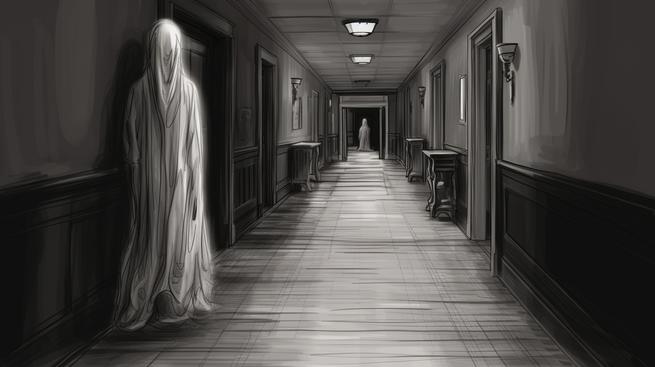
The Hawthorne Hotel stands as a beacon of historic grandeur in the heart of Salem, Massachusetts, not Boston. Opening its doors in 1925, the hotel quickly became an iconic fixture in a town notorious for its bewitching past—the infamous Salem witch trials. Over the years, guests and staff have whispered tales of otherworldly encounters, suggesting that some residents have checked in but never checked out.
Guests often recount tales of the supernatural on the sixth floor, where the ghost of a woman is said to roam. Her presence is so strong that even skeptics walk away with goosebumps. Visitors have reported faucets turning on by themselves, unexplained noises, and the sensation of being watched. The maritime-themed room 612 often takes center stage in these ghostly narratives, with guests claiming to wake to an inexplicable, icy chill despite the absence of any draft.
The hotel’s grand ballroom also holds its share of secrets. During events, guests have felt invisible hands tap their shoulders, only to turn around and find no one there. Some have even glimpsed a spectral couple gliding across the dance floor, lost in a timeless waltz. These apparitions appear to be harmless yet add a layer of intrigue to every gathering.
On the lower levels, the hotel’s tavern has been the setting for its own series of eerie occurrences. The staff regularly deals with glasses that seem to leap off shelves and shatter, as if an unseen force is having a bit of a temper tantrum. And then there’s the ghostly child who reportedly plays pranks on the patrons, his laughter echoing from the corners of the room.
The Hawthorne Hotel’s haunted reputation is not just a local legend but a treasured part of Salem’s tapestry of tales. It’s a place where the past and present collide, where guests can dine with spirits—in more ways than one—and where every creak and whisper adds to the lore of this enduring establishment. Whether these stories are the product of overactive imaginations or something more spectral, they are an indelible part of the hotel’s charm, making it a must-visit for those who wish to sleep with history—and perhaps something a little more.
I need to correct the location you mentioned; The Hawthorne Hotel is actually in Salem, Massachusetts, not Boston. Here’s a first-person account of the ghost story:
“I stayed at Salem’s Hawthorne Hotel, and man, the sixth floor gave me the creeps. Woke up in room 612 to a freezing cold room and felt like someone was watching me the whole night.”
King’s Chapel Burying Ground

King’s Chapel Burying Ground in Boston, Massachusetts, whispers tales of the supernatural, where shadows and spirits tread the thin line between the living world and the hereafter. As the oldest graveyard in the city, established in 1630, it cradles the bones of early settlers and patriots, with the first soul laid to rest being Isaac Johnson, the landowner who wished to slumber eternally in his own pumpkin patch.
The burying ground, a stone’s throw away from the bustling city life, becomes an eerie theatre of the past after dark. Here, the dead hold court, with tales of headless apparitions and murky figures that send shivers down the spines of the living. The black, wrought iron gates that stand guard seem to creak with the weight of centuries-old secrets.
The air around King’s Chapel Burying Ground seems to hum with the spectral remnants of those who once walked the cobblestone streets of colonial Boston. Visitors report strange encounters, where the past and present collide in ghostly whispers. The cemetery has long been a gateway to the paranormal, an anchor for stories that refuse to be forgotten, and a canvas for the phantoms of Boston’s storied history.
A visit to King’s Chapel Burying Ground is not just a walk among tombstones but a journey through time, where every grave tells a story, and every shadow might just be a spirit waiting to recount the days of yore.
I was walking past King’s Chapel Burying Ground one chilly evening when I felt a cold hand brush against mine, but when I turned, no one was there. It totally freaked me out!
The Langham
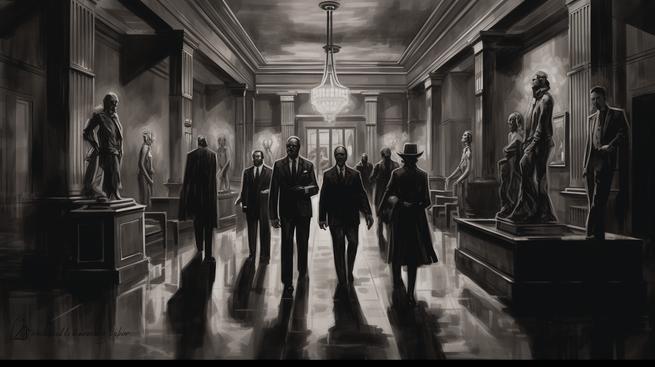
The Langham Boston, with its opulent facade and grand presence, stands as a beacon in the city’s bustling Financial District. Originally the Federal Reserve Bank, this landmark hotel’s storied past has long been a topic of hushed whispers and curious wonder amongst both locals and visitors alike. The tales of its haunted history add an intriguing layer to its already rich tapestry.
In the heart of the city, The Langham Boston is no stranger to ghostly encounters. Guests and staff have reported eerie sensations, unexplained sounds, and even fleeting apparitions weaving through the hotel’s elegant halls. These spectral sightings have become as much a part of the hotel’s character as its luxurious accommodations and impeccable service.
The most famous phantoms said to roam The Langham include figures from its days as a treasury. Some say the spirits of former bankers are still keeping a watchful eye on the building, ensuring the security of the wealth they once guarded so fiercely. Guests have often felt the weight of unseen gazes in the old vaults, now transformed into a unique dining space, where the clink of glasses mingles with whispers from the past.
In particular, one room seems to be the epicenter of otherworldly activity. Here, visitors report waking in the dead of night to a chill in the air and the feeling of being watched. The brave souls who inquire about these experiences often find their stories echoed by others who’ve stayed in the same room, each tale adding another thread to the hotel’s spectral legend.
The Langham’s ghostly lore serves as the perfect backdrop for travelers seeking a stay with a side of the supernatural. While the hotel ensures the living are pampered, it seems the spirits are intent on making their presence known, ensuring The Langham Boston remains a place where history and mystery dance hand in hand. Whether these apparitions are mere echoes of a bygone era or playful spirits enjoying the hotel’s modern-day luxuries, their stories are now woven into the very fabric of this historic establishment.
I stayed at The Langham in Boston and felt a weird chill down my spine as I walked the halls; they say old bankers haunt this place, still guarding their treasure or something. Heard some strange noises at night, too, like someone was shuffling papers in the next room, but no one was there.


